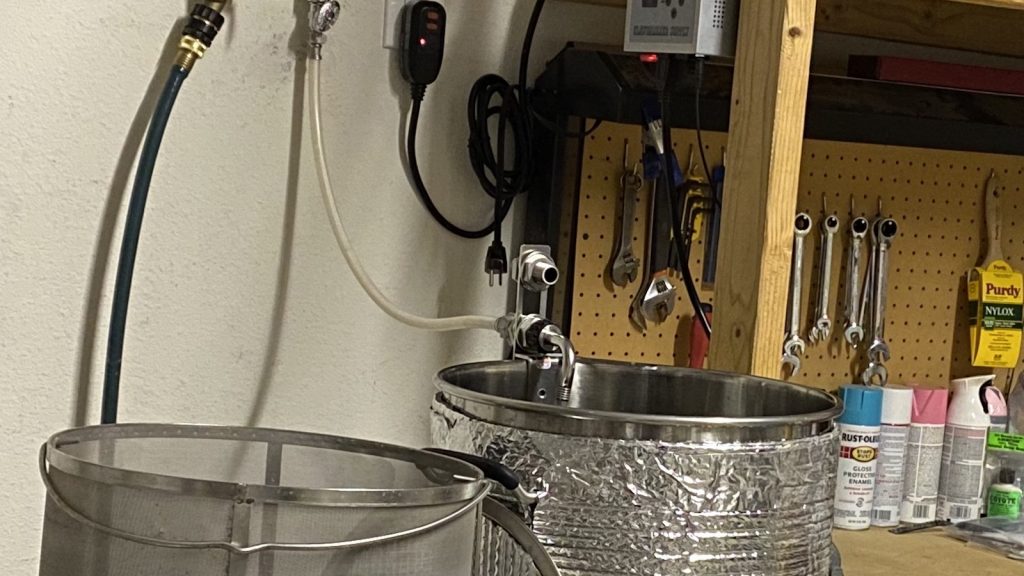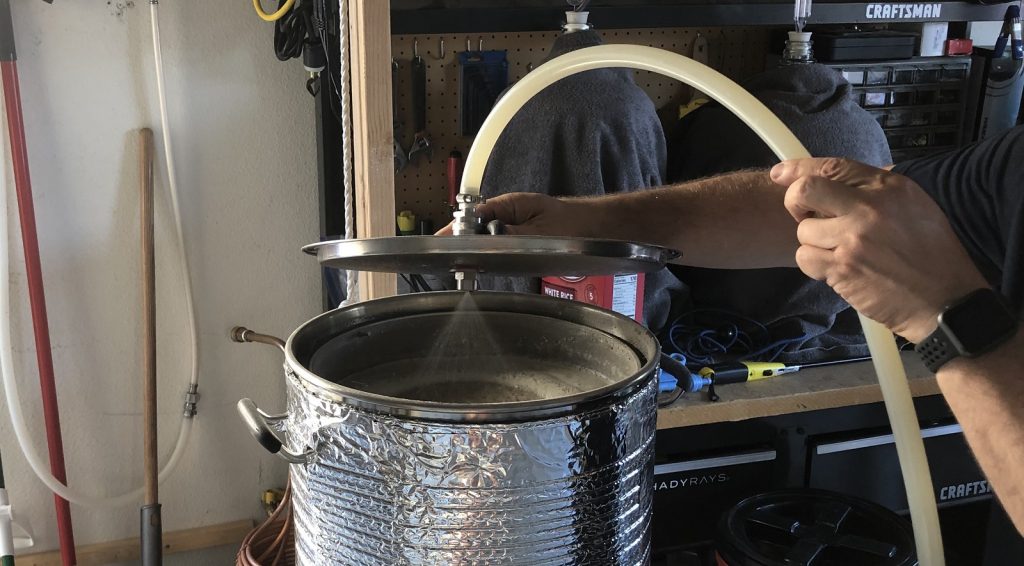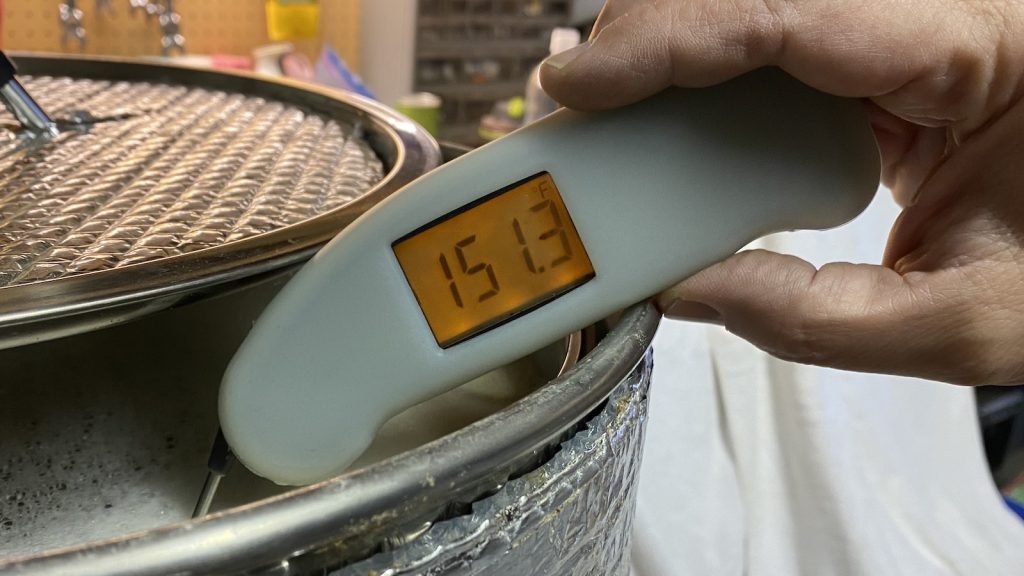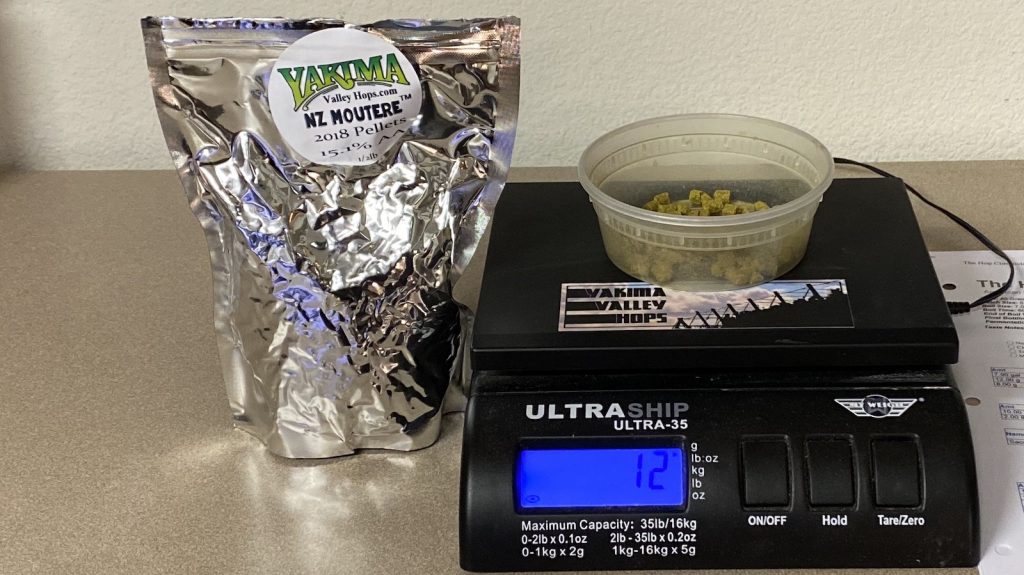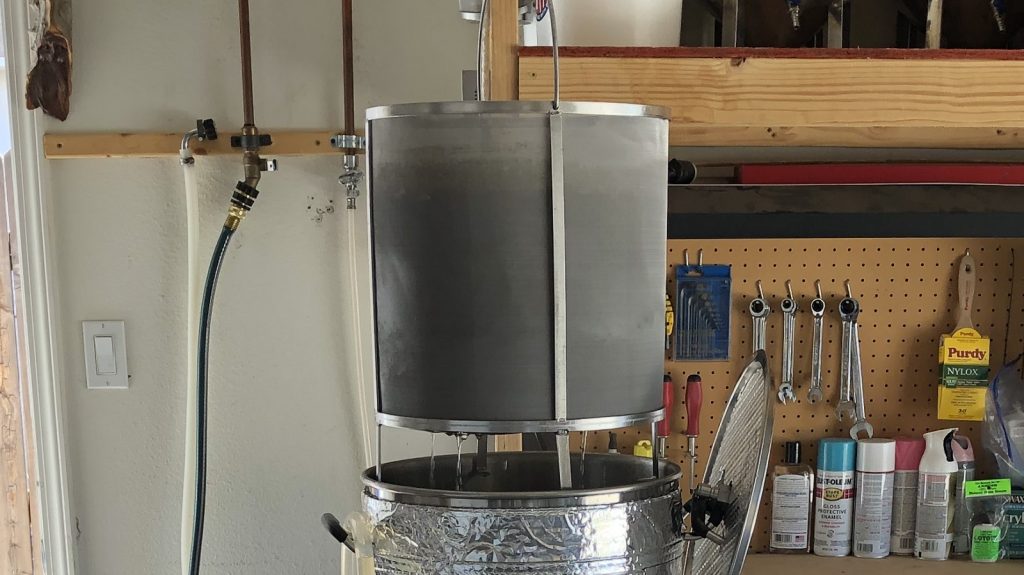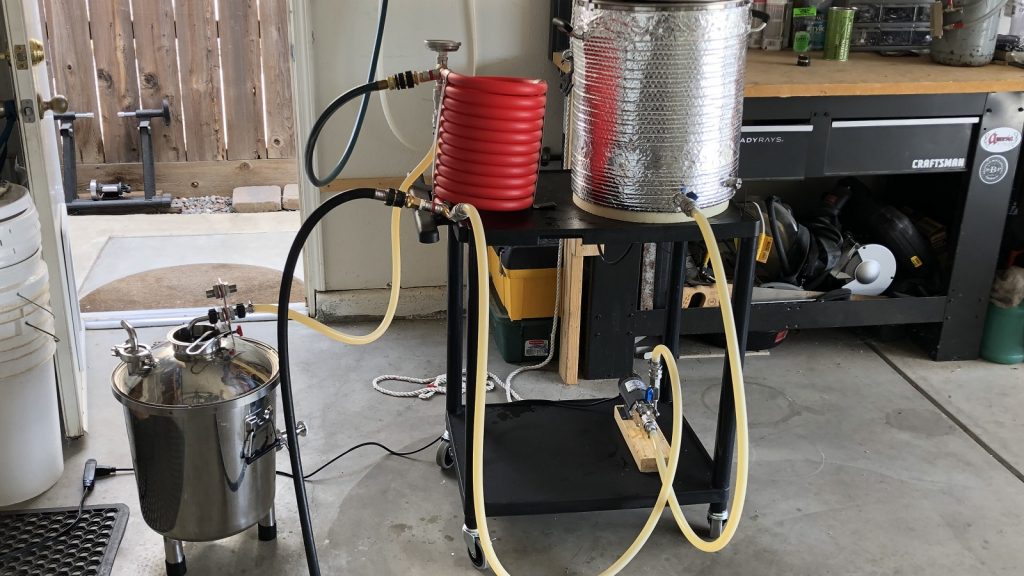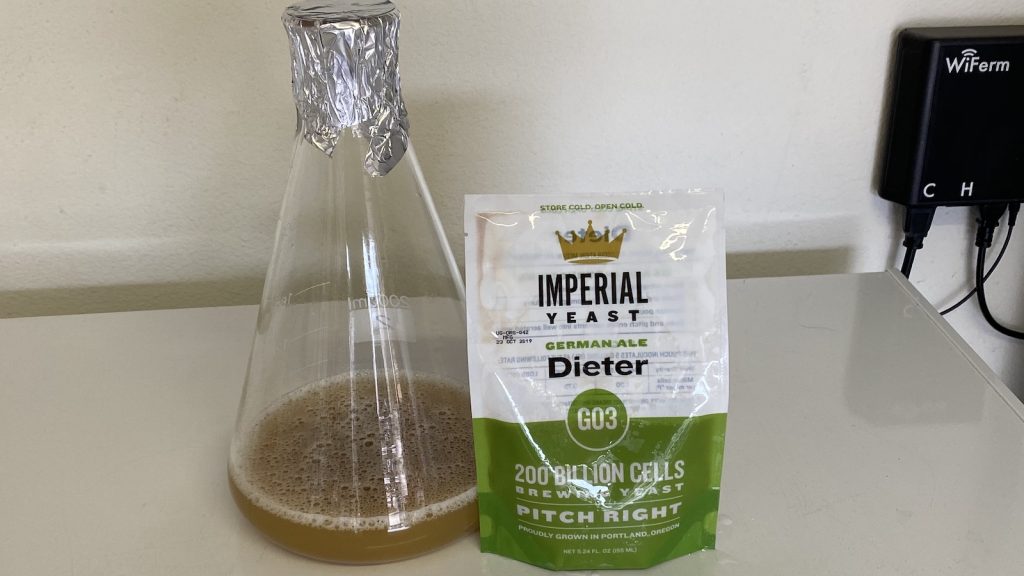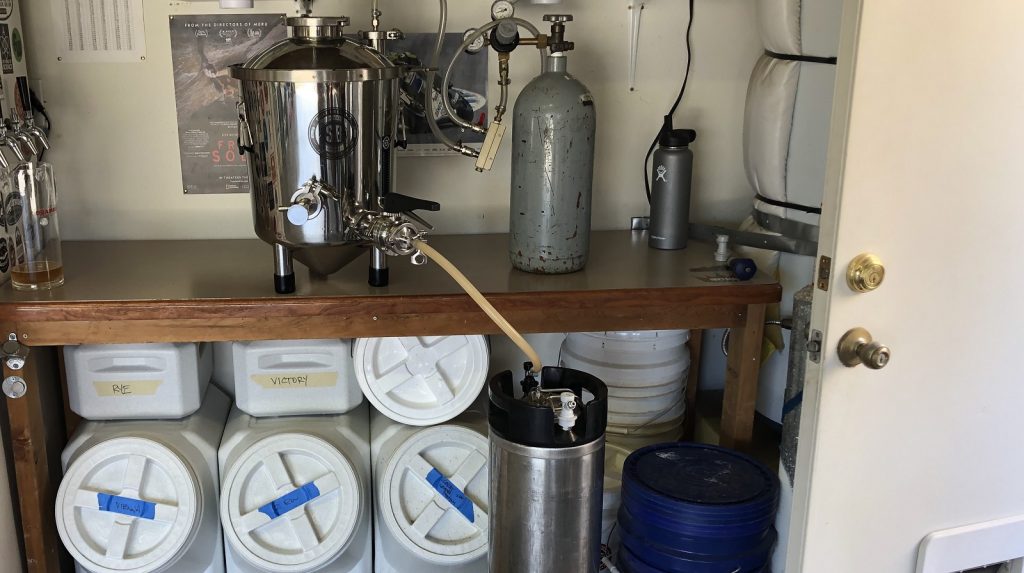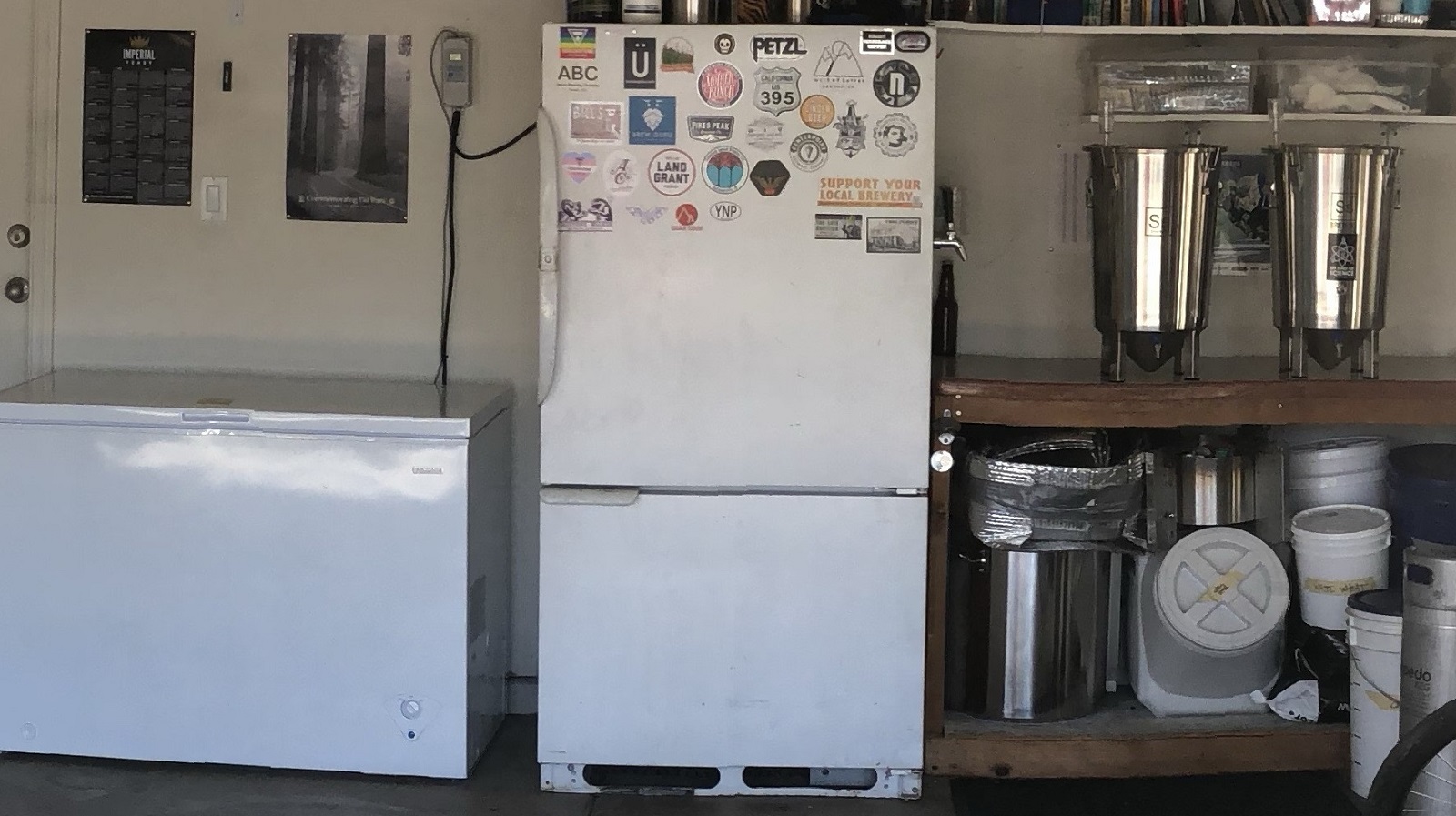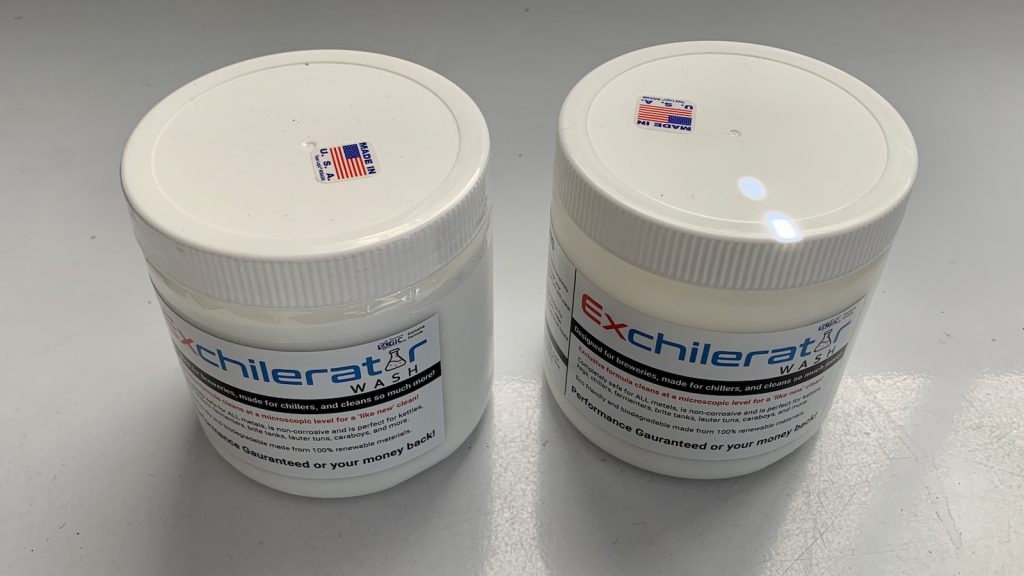 Paul was raised in a suburban Indianapolis neighborhood before attending Purdue University where he obtained a degree in Civil Engineering. For the past 25 years, he has worked in water engineering and is currently a licensed Professional Engineer in California, where he moved with his family in 2013. In addition to brewing, Paul loves the outdoors and is an avid rock climber, spending many weekends scaling some of the most beautiful faces Central California has to offer.
Paul was raised in a suburban Indianapolis neighborhood before attending Purdue University where he obtained a degree in Civil Engineering. For the past 25 years, he has worked in water engineering and is currently a licensed Professional Engineer in California, where he moved with his family in 2013. In addition to brewing, Paul loves the outdoors and is an avid rock climber, spending many weekends scaling some of the most beautiful faces Central California has to offer.
| ABOUT PAUL |
How did you get into brewing?
I started drinking “imports and micro brews” when I was at Purdue in the early 90s, and through my participation in an industry-university cooperative education program, I got to spend time in both California and Washington in the early days of the IPA boom. After graduating and getting married in the mid-2000s, I landed back in Indianapolis at a point when the West Coast hoppy-beer influence hadn’t quite taken hold, which is what ultimately inspired me to start homebrewing—I wanted to make the kind of beer I came to love during my travels but couldn’t find locally. At the time, I was managing a team of engineers at a consulting firm that coincidentally included a couple homebrewers, and after brewing a batch with them, they all chipped in on a Great Fermentations gift certificate that I used to by an extract starter kit. While I’ve had some lulls, mostly due to work, I’ve brewed pretty consistently since then.
What was your first batch and how did it turn out?
The first batch I ever brewed was an extract ESB inspired by Red Hook ESB, which was my wife’s favorite beer at the time. It turned out pretty decent, in fact someone I shared it with even said, “well, it doesn’t suck!” All in all, it wasn’t a terribly memorable experience. The story I prefer to tell is about the second batch I brewed, an IPA that was designed mostly by Darren Connor, who was working at Great Fermentations at the time and is now co-owner of and brewer at Bier Brewery. After determining what I liked in an IPA, he punched a recipe into the computer, scratched some changes to the hop bill, and gave it to me to brew. This particular recipe came to be known as Baby Boy IPA, which I still brew to this day and is fairly well known in some Northeast Indianapolis circles.
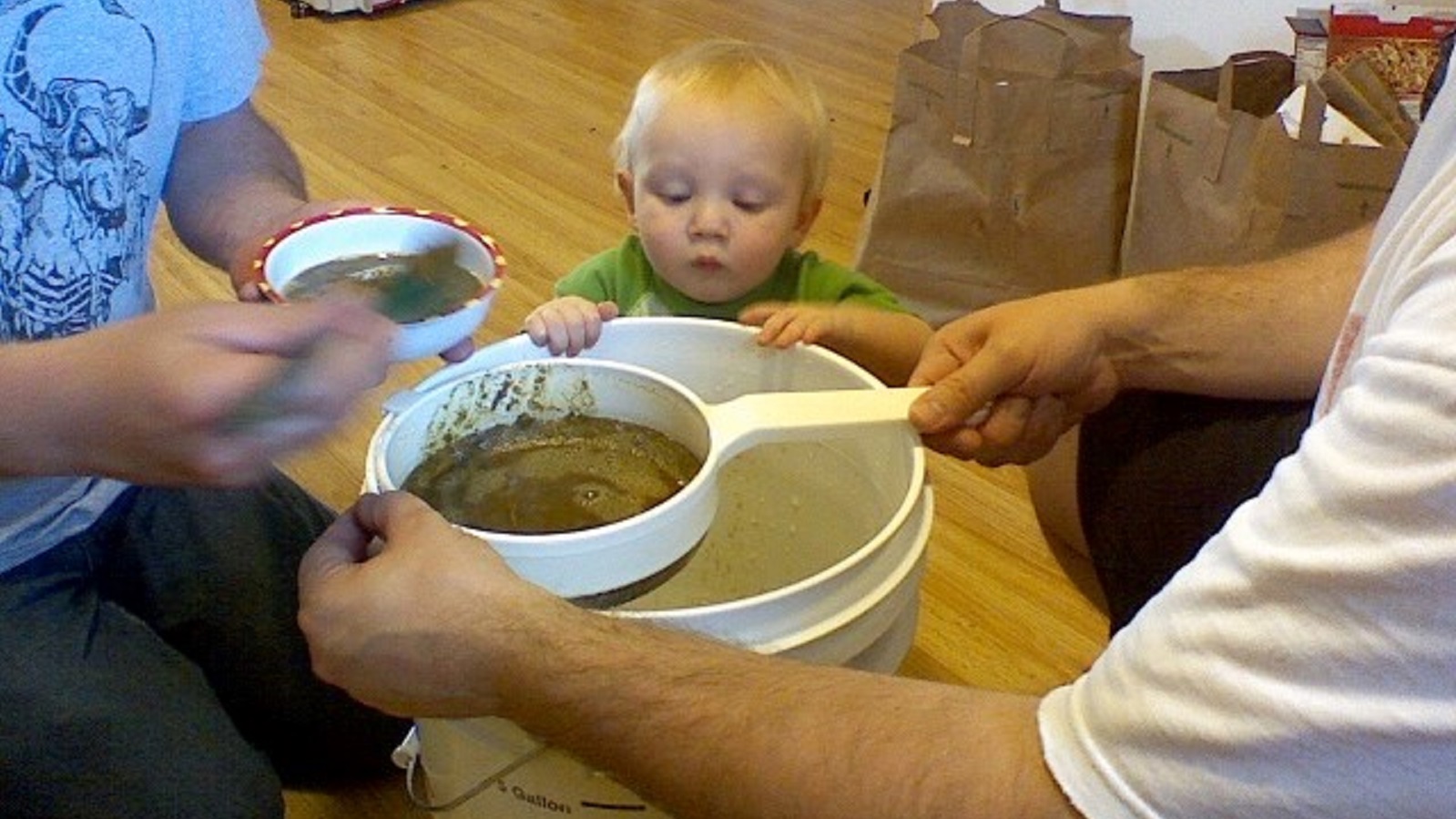
How did you get involved with Brülosophy?
I moved to Fresno, CA in 2013 and happened to buy a house that’s basically across the street from the House of Pendragon Brewing Co. taproom. As I got to know the various beer slingers, several told me about another regular who had recently started doing brewing experiments for a project called Brülosophy. I met Marshall soon after and we hit it off. Since we live a block from each other, we started hanging out pretty often and our families got to know each other. Fun fact– a few years ago, his youngest daughter broke her leg jumping on the trampoline with my kids. Last year, Marshall brought up the idea of me taking over The Hop Chronicles series, which I thought sounded like a cool way to keep this hobby interesting.
What xBmt has surprised you the most?
Every xBmt showing tasters couldn’t perceive a difference between lager beers fermented with traditional lager strains at varying temperatures have definitely surprised me the most.
Have the xBmts influenced your current brewing perspectives?
Absolutely! I’m not a full-time Short & Shoddy brewer and still tend to abide by most classic brewing customs, but I do ferment the good majority of my lagers these days at ale temperature, something I would never have considered before the xBmts.
What are your 3 favorite styles of beer?
I can find enjoyable aspects to nearly all beer styles, but if I had to choose just 3 favorites…
West Coast IPA
I know it’s not technically its own style, but the clear, crisp, citrusy and piney American IPA made popular by West Coast breweries is definitely high on my favorites list.
Pale Lager
More of a category than a style of beer, I love any lager that’s pale in color and easy to drink. Whether it’s an American Light Lager, Czech Pils, or Munich Helles, if it’s in my glass, I’m a happy camper.
Berliner Weisse
Considering how long I’ve been into craft beer and brewing, my love of sour beer is relatively new, as I only began appreciating such styles in the last few years. I truly enjoy the whole gamut of sour styles, but if I had to pick just one to drink all the time, it’d have to be Berliner Weisse. The combo of moderate tartness with slight funk, doughy flavor, and low ABV just does it for me.
What are your favorite ingredients?
Malt: Mecca Grade Estate Lamonta American-Style Pale Malt
I’ve been using Lamonta for over a year at this point and I really like the malt fullness and backbone it contributes to beer. Toasty and flavorful without being so rich as to overwhelm more delicate styles, Lamonta is go-to for me when brewing ales from any region.
Hops: Citra
There are a number of hop varieties I love, but Citra really takes the cake for me. I tend to prefer my hoppy American ales to favor citrus and stone fruit characteristics, which is exactly what I get from Citra, especially the new LUPOMAX version!
Yeast: Imperial Yeast A04 Barbarian
Over the years, my Baby Boy IPA recipe has evolved a bit, with one major changed being to the yeast strain. Rather than fermenting with a classic clean American strains, I experimented with a few newer yeasts and settled on Imperial Yeast A04 Barbarian, which I’ve found really allows the hops to shine while contributing a very pleasant mouthfeel.
What’s your desert island beer?
This is a tough one because there are currently so many good beers other there. While my go-to tends to change, at the moment, I’d have to pick Monterey Street Pale from Central Coast Brewing, with Lancelot IPA from House of Pendragon coming in a very close second.
What music do you listen to while brewing?
Whatever ear worm is burrowing in my head at the time. Lately, it’s been Jason Isbell and Mt. Joy, and next week it could be some old metal. I try to make long playlists so I can focus on the task at hand.
What else do you enjoy doing besides brewing?
My other main hobby is rock climbing, and my location allows me easy access to a lifetime of climbing right in my backyard. I’ve managed to successfully blend the two hobbies by brewing and donating beer to our local climbing gym for competitions and other events, as well as for a few climbing outings per year with friends.
If you could go back, what brewing advice would you give yourself?
I’d pay more attention to the cold-side process, namely yeast freshness, fermentation temperature control, and reducing oxygen exposure. I spent a lot of time and money chasing ways to avoid brew day headaches, but it didn’t seem to have a big impact on the quality of my beer. Everything really changed when I shifted my focus to the cold-side and began pressure transferring to purged kegs.
| BREWING GEAR & PROCESS |
For the last year or so, I’ve been brewing almost exclusively on a Clawhammer Supply 120v electric rig that I absolutely love.
Pre-Brew Preparation
After designing a recipe in BeerSmith and printing out the brew sheet (I save them in folders for future reference), I collect the full volume of filtered tap water, which happens to be quite good for brewing where I live. I have a water line plumbed to my brewing area and use The Hangover to keep things dry.
After adjusting the water to my desired profile, I flip the switch to get it heating up then proceed to weighing out and milling the grain my my Monster Mill MM2.
Brewing
The beauty of the Clawhammer Supply 120v electric brewing system is that it’s all-in-one, meaning few moving parts and hence fewer broken pieces. Once the water is to strike temperature, I pour the grist into the grain basket and stir to incorporate before turning on the pump to recirculate during the mash rest.
While the Clawhammer controller has a temperature reading, I always double-check with my Thermapen.
While the mash is resting, I measure out the kettle hop additions.
Once the mash rest is complete, I use a pulley to hoist the grain basket out and allow it to drip while the wort heats up.
Next, I boil the wort for between 30 and 60 minutes before chilling it with an Exchilerator Maxx CFC.
I then place the filled fermentation vessel, which is either a Ss Brewtech Brew Bucket or Spike FLEX, into my temperature controlled chest freezer chamber. While I used to propagate yeast in starters that I made a day or two before brewing, since moving to Imperial Yeast, I either pitch direct or make a vitality starter with leftover wort.
Packaging & Serving
When fermentation is complete, I pressure transfer the beer to ball lock kegs that have been purged of oxygen with CO2.
The filled keg gets placed in my 4-tap kegerator and the beer is burst carbonated overnight before I reduce the gas to serving pressure.
I usually let freshly kegged beers condition in my kegerator for a few days before digging into them.
Cleaning & Sanitation
I recently began using the new Exchilerator Brewery Wash to clean all of my gear, it is some seriously powerful stuff!
My go-to sanitizer is Star San, which I make a new batch of for each brew day.
Contact Paul via email at paul@beerconnoisseur.local and feel free to leave any questions in the comments section below! A regularly updated version of Paul’s process and gear can be found on his contributor page.
Support Brülosophy In Style!
All designs are available in various colors and sizes on Amazon!
Follow Brülosophy on:
FACEBOOK | TWITTER | INSTAGRAM
If you enjoy this stuff and feel compelled to support Brulosophy.com, please check out the Support page for details on how you can very easily do so. Thanks!


